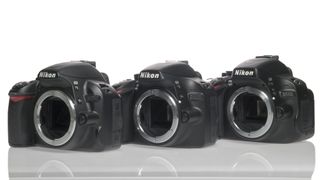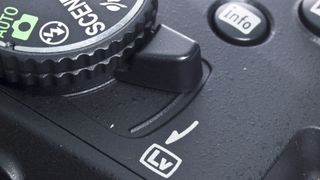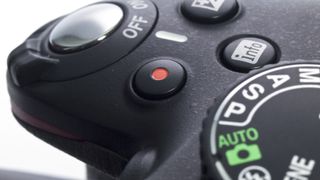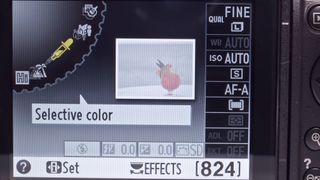Why you can trust TechRadar

When gripping and squeezing the Nikon D5100 a little harder than strictly necessary it becomes clear that it is, on the whole, very well built. It feels nicely put together and designed to last.
The question mark is over the SD card port cover that, when closed, still moves under a tapping finger. It's not a major point, but it doesn't quite match the high quality feel of the rest of the camera.
One knock-on effect of the success of compact system cameras appears to be that SLR manufacturers are making smaller cameras. Hence, at 128 x 97 x 79mm and weighing in at around 560g (with battery and card) the D5100 is approximately 10% smaller and lighter than the D5000 it replaces and the articulated screen is 17% thinner.

This and the larger LCD screen has meant that Nikon has had to make a few changes to the D5000's control layout for the D5100. It would certainly be hard to find room for any additional buttons on the rear of the D5100 without seriously limiting space for the photographer's thumb.
Perhaps the most significant difference in the control layout between the two cameras is that the Live View button found on the rear of the D5000 has gone and instead the D5100 has a sprung lever switch underneath the main mode dial.

This switch feels well made and the D5100 responds quickly to its use, but given that using Live View means looking at the screen, it is debatable whether moving its activation control to the top-plate is the best solution. It's easy to mistake it for the camera's power switch.
Similarly, movie recording is now started and stopped by pressing the dedicated button, which is also on the camera's top-plate. Nikon would argue that there is logic to putting the shooting or recording buttons close together.

Also, because the D5100 has an articulated screen, you may find you more often view the camera from above than you would with a camera with a fixed screen, and the top-plate controls are easier to locate when shooting in this way.
Although the screen provides a clear view of the image being composed and the magnified view has enough detail to facilitate manual focus, reflections are an issue in bright sunlight. While it is still possible to compose the image accurately, and the shade of a hand will ensure enough detail is visible for manual focusing, it can sometimes be tricky to make out some of the smaller on-screen icons.
As the viewfinder offers just 95% coverage (standard for a camera of this level), there is scope for a few surprises around the image frame.
On the plus side, however, even with the AF-S Nikkor 18-55mm f/3.5-5.6 G kit lens, the view is bright and clear enough to allow manual focusing – although in many instances it may be better to do this while looking at the magnified Live View image.
When the Color Sketch or Miniature Special Effects modes are activated on the screen the Live View image becomes very jerky, presumably because of the demand on the D5100's processing power.

Nevertheless, the effects are easy to use and generally work well, although a grainy monochrome mode might be preferable to the Color Sketch mode. It would also be nice to have control over the exposure or at least exposure compensation when these modes are selected.
Small niggles aside, the Nikon D5100 is easy to get to grips with, and while there might not be direct control for aspects such as sensitivity, drive mode, white balance and metering, these and more can be accessed quickly via the Information Display.

Researchers produce thinnest sheet of metal ever using a 100-year old Japanese technique — Goldene could pave way for super catalysts, ultra high density optical storage and much more

Thomas & Uber Cup 2024: how to watch BWF badminton online

A mystery Wear OS watch has just surfaced as the Pixel Watch 3 gets closer
